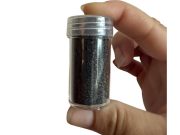Healthcare real estate investment trusts (REITs) invest in a variety of property types such as assisted living, hospitals, and surgery centers. The operators in these properties are providing services that won’t be going away. This makes healthcare REITs one of the most attractive for long-term growth.
It’s important to consider the changes in the healthcare industry when you’re looking for a healthcare REIT to invest in. Pay close attention to the types of properties they invest in, the services that are provided within the real estate, and the strength of the operators.
You also want a healthcare REIT that’s ready and able to make new investments as opportunities arise. The healthcare industry is changing, so REITs have to be able to move quickly with it.
Investing in a hospital REIT or nursing home REITs could add stability to a portfolio over the long term. Because real estate is an asset class that’s not directly tied to traditional markets, REITs can bolster your portfolio when markets take a plunge.
“Health care REITs provide investors with a useful diversification tool with a robust long-term performance that will typically reduce the volatility of a portfolio because of how much returns differ from those of the S&P 500,” says Andrew Latham, managing editor of SuperMoney.
If you are one of the many investors looking to diversify your portfolio through an investment in REITs , the WSWD research team has compiled this list of some of the most attractive healthcare REITs available.
Medical Properties Trust (MPW) is a healthcare REIT that invests in hospitals; it owns 385 hospital properties representing 42,000 licensed beds and spread across nine countries.
Medical Properties Trust leases facilities to 46 hospital systems and ranks as the second largest owner of hospital beds in the U.S. Hospital systems enter into sale-leaseback arrangements with the REIT to monetize real estate assets and reduce operating costs.
MPW has delivered 30% annual asset growth and 8% annual FFO per share gains over the past decade. That has helped a short string of seven consecutive years of dividend increases, with growth averaging a modest 4% annually.
During the first nine months of 2020, Medical Properties Trust grew FFO per share by 15% and closed $3.1 billion of acquisitions, with more deals scheduled to close in 2021 as the REIT capitalizes on acquisition opportunities created by the pandemic. The effect of COVID-19 on its operations has been minimal. Medical Properties Trust expects to collect 98% of cash rents and interest payments due to it in calendar 2021.
“The REIT has already purchased $3 billion YTD and more is likely to come-making 2020 the second largest year for acquisitions in the company’s history,” write Stifel analysts, who rate the stock at “Buy”. “This leads us to project strong earning’s growth in 2020 and 2021 of 20% and 6%, respectively.” They add that valuations on MPW remain attractive.
Mizuho analyst Omotayo Okusanya also upgraded the stock months ago, citing solid rent collections and an improved acquisition outlook as reasons for earnings upside.
Healthcare REIT Healthpeak Properties (PEAK) owns 633 properties, balanced across the life sciences, senior housing and medical office sectors. The life sciences portfolio consists of lab and office space focusing on three leading medical research markets (San Francisco, San Diego and Boston), with properties typically located in business park or campus settings. Medical office properties are located adjacent to hospitals and leased to hospitals or physician groups.
Income from senior housing properties declined in the first nine months of 2020 due to pandemic effects, but was offset by strength in the life sciences and medical office portfolios, which grew income 5.7% and 2.3%, respectively. Adjusted FFO has declined, but by a modest 7% or so.
The company has better-than-average liquidity to ride out COVID-related disruptions. Total liquidity is $2.6 billion, including $2.4 billion available on its $2.5 billion revolving credit facility, as well as $150 million in cash and cash equivalents and no material debt maturities before 2023.
Longer-term, this high-yield REIT should benefit from demographic trends that include aging baby boomers demanding new treatments and medical devices, increased outpatient services and more seniors requiring daily living assistance. In addition, the company boasts a $1.2 billion development pipeline that is already 63% pre-leased.
Healthpeak was previously known as Healthcare REIT and cut its dividend in 2017 after spinning off its nursing home business, marking the REIT’s only dividend cut in 25 years. Since then, the company has paid a steady $1.48 annual dividend. The payout ratio has risen to about 90% in 2020 because of COVID, but it has averaged a safe sub-80% over the past four years.
National Health Investors (NHI) invests in retirement communities, skilled nursing facilities, medical office buildings and specialty hospitals. Its portfolio encompasses 243 properties leased to 37 operators and spread across 34 states.
NHI has outperformed healthcare REIT peers over the past six years, generating roughly 5% annual FFO per share growth and 6% dividend growth while maintaining modest payout at less than 80% of earnings.
The company’s adjusted FFO per share grew nearly 7% in the first six months of 2020 as a result of improving occupancy trends and federal programs that are helping its operator tenants.
The COVID impact on the REIT has been minimal, as evidenced by 100% of contractual rents collected for the second quarter, 96.2% collected during the third and 92.7% in Q4. “The remaining balance relates primarily to one additional tenant concession as well as lower forecasted revenue from transitioned properties prior to the start of the pandemic,” the company states.
primarily to one additional tenant concession as well as lower forecasted revenue from transitioned properties prior to the start of the pandemic,” the company states.
One reason this REIT is great for retirees is its fortress-like balance sheet. NHI has very low leverage (4.8 times ratio of debt-to-adjusted EBITDA), $785 million of liquidity and no significant debt maturities before 2022.
NHI also is tops among these 11 high-yield REITs at a nearly 7% yield. The REIT improved its payout earlier this year with a 5% hike to $1.1025 per share.
Another solid healthcare REIT is Healthcare Trust of America (HTA), which is the country’s largest owner/operator of medical office buildings. The REIT owns 467 medical office buildings comprising 25.1 million square feet of leasing space and valued at approximately $7.4 billion. Its footprint extends across 33 states, but most investments target 20 to 25 gateway markets where leading universities and medical institutions are located.
A decline in new leasing activity due to COVID has been offset by existing tenants seeking to extend their leases and cash collections totaled 102% of monthly rents during the third quarter (including collections on prior-period accounts). Occupancies were 89.5% and HTA executed 1.1 million square feet of leases during the quarter.
Most impressively, the company reported record FFO per share of 43 cents during the third quarter.
Like National Health Investors, this REIT has exceptional financial strength to carry it through the pandemic crisis, with total liquidity at $1.5 billion and less than $6 million of debt maturities before 2022. The REIT signaled its confidence in September by reactivating its $300 million share repurchase program and hiking its dividend by 1.6%.
“We ‘met’ with management during NAREIT, and we believe the REIT is in a strong position to continue modest growth over the next few years, even if the pandemic flares up over the next few months,” write Stifel analysts, who rate HTA at “Buy”. “Internal growth should continue to be steady from lease renewals at higher rents (+5.1% YTD20), minimal collection issues, and controlled expense growth.”
Raymond James analyst Jonathan Hughes has the stock at “Outperform”, recognizing that the stock’s underperformance in 2020 has enhanced its risk/reward profile.
Where to invest $1,000 right now...
Before you consider buying National Health Investors, you'll want to see this.
Investing legend, Keith Kohl just revealed his #1 stock for 2022...
And it's not National Health Investors.
Jeff Bezos, Peter Thiel, and the Rockefellers are betting a colossal nine figures on this tiny company that trades publicly for $5.
Keith say’s he thinks investors will be able to turn a small $50 stake into $150,000.
Find that to be extraordinary?
Click here to watch his presentation, and decide for yourself...
But you have to act now, because a catalyst coming in a few weeks is set to take this company mainstream... And by then, it could be too late.
Click here to find out the name and ticker of Keith's #1 pick...













